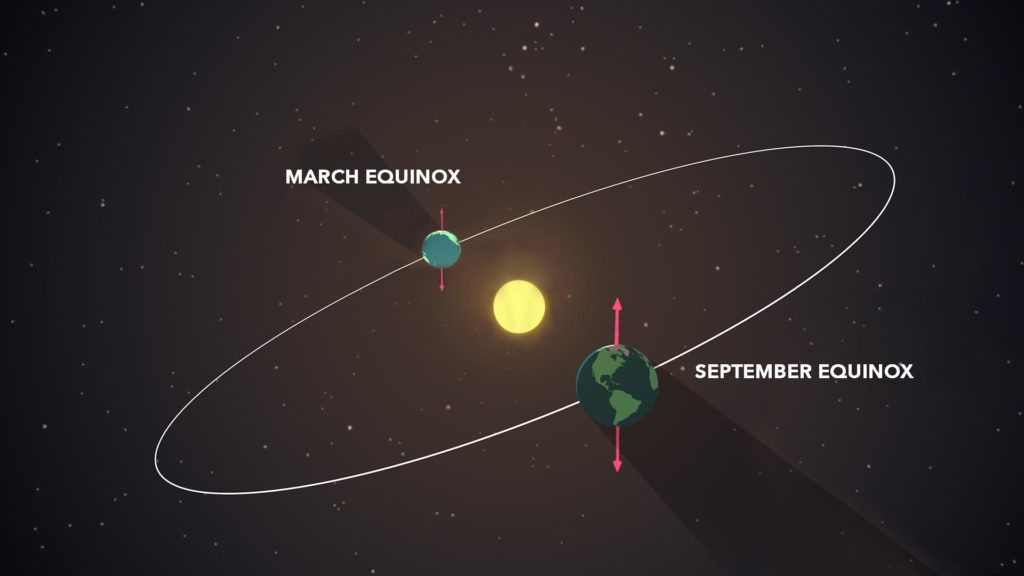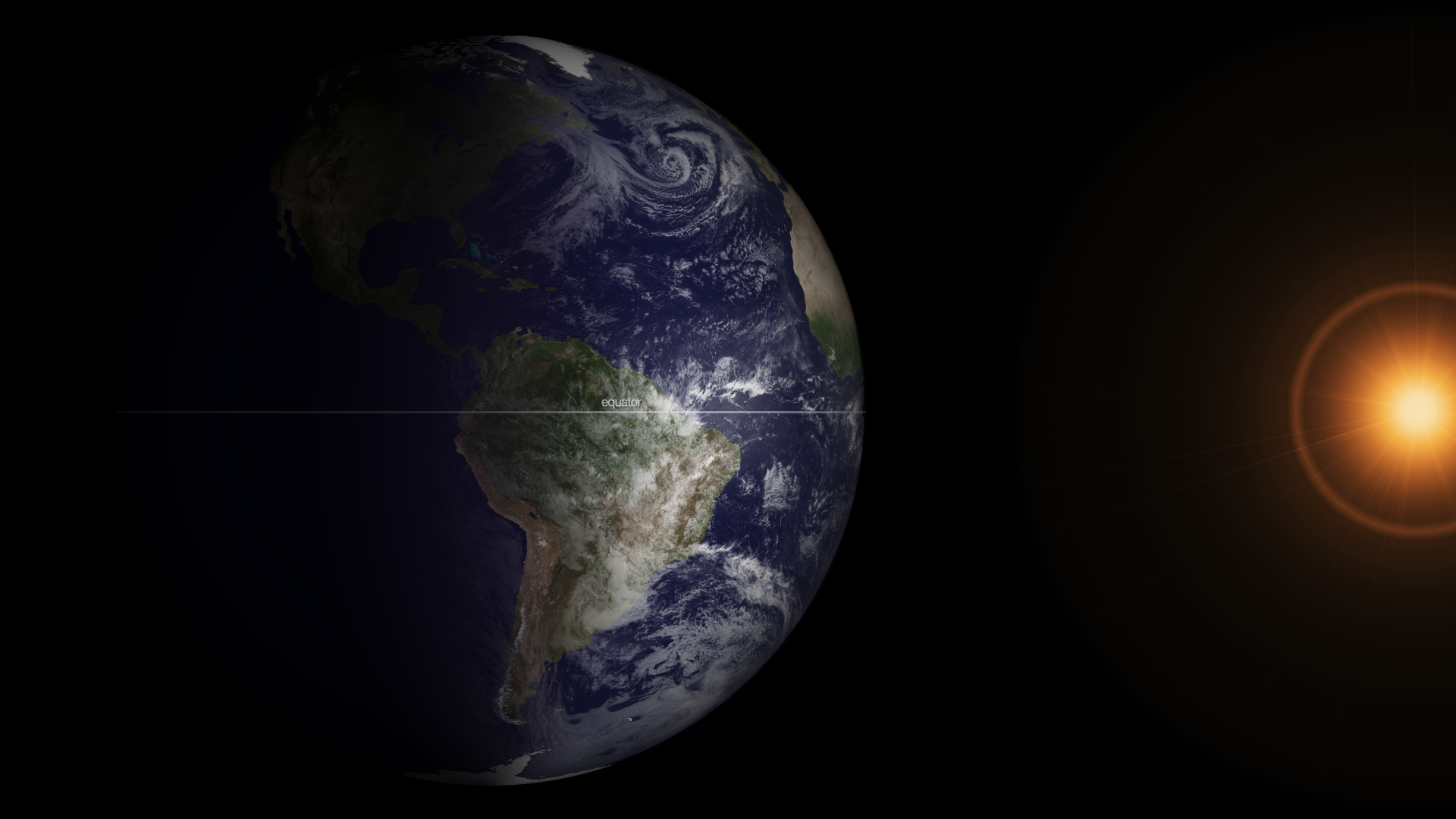The March equinox marks the moment the Sun crosses the celestial equator – the imaginary line in the sky above the Earth’s equator – from south to north. This happens on March 19, 20, or 21 every year.
The Equinox is one of the two periods of the year when the sun crosses the equator and the days and nights are in equal length all over the earth, marking our spin from winter to spring.
The equinox has inspired a number of interesting false beliefs, including that the event causes a massive disruption of communication satellites, or that on the equinox an egg can effortlessly be balanced on its end (egg balancing is a skill you can practice any day of the year).
The Term “Equinox” Means “Equal Night.”
Like a spinning top, our home planet wobbles slightly on its axis. Today, the axis points towards the famous “north star,” Polaris. But 12,000 years from now, it will shift away from Polaris and aim itself at a different star: Vega. This whole cycle will then repeat itself over the course of 26,000 years.
Gravitational forces exerted by the sun and moon are the main reason why planet Earth wobbles, and as it wobbles, the sun’s relationship with the zodiac calendar changes. During the vernal equinox, the sun crosses in front of the constellation Pisces. Or at least that’s true these days. Prior to the year 68 B.C.E., the sun used to line up with Aires — another constellation — on the spring equinox. By 2567, the sun will line up with the constellation Aquarius.









